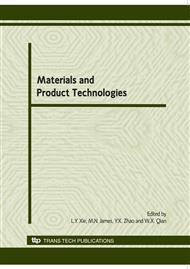p.171
p.176
p.181
p.186
p.191
p.196
p.201
p.206
p.211
Fatigue Life Prediction of Spot-Welded Structure under Different Finite Element Models of Spot-Weld
Abstract:
In order to accurately and conveniently simulate spot-weld in FEA, based on the typical specimen of stainless steel, three typical finite element models (FEM) of spot-welds have been created as analysis objects. Firstly, based on the calculation theory of the spot-weld fatigue, two sets of analytical solution, which were the maximum principle stress of the specimen around the spot-weld nugget, were obtained under the action of stretching and shearing, respectively. Then, their linear elastic FEM were established, and the stress states around the spot-weld nugget and the adjacent sheets were analyzed. Finally, according to the results compared between the analytical solution and simulation solution, it can be seen that, when the specimen was stretched, using the brick model to simulate the nugget can get the smallest absolute error of the principle stress, so its spot-weld fatigue damage is the most consistent with the actual situation, a stiff beam model followed, and an umbrella model is the worst; when the specimen was sheared, using the brick model to simulate the nugget can also get the smallest absolute error of the principle stress, so its spot-weld fatigue damage is also the most consistent with the actual situation, the umbrella model is followed, and the stiff beam model is the worst. The results show that appropriate selection of spot-weld FEM is extremely essential for fatigue life prediction under the initial design of products.
Info:
Periodical:
Pages:
191-195
Citation:
Online since:
June 2010
Authors:
Price:
Сopyright:
© 2010 Trans Tech Publications Ltd. All Rights Reserved
Share:
Citation:


